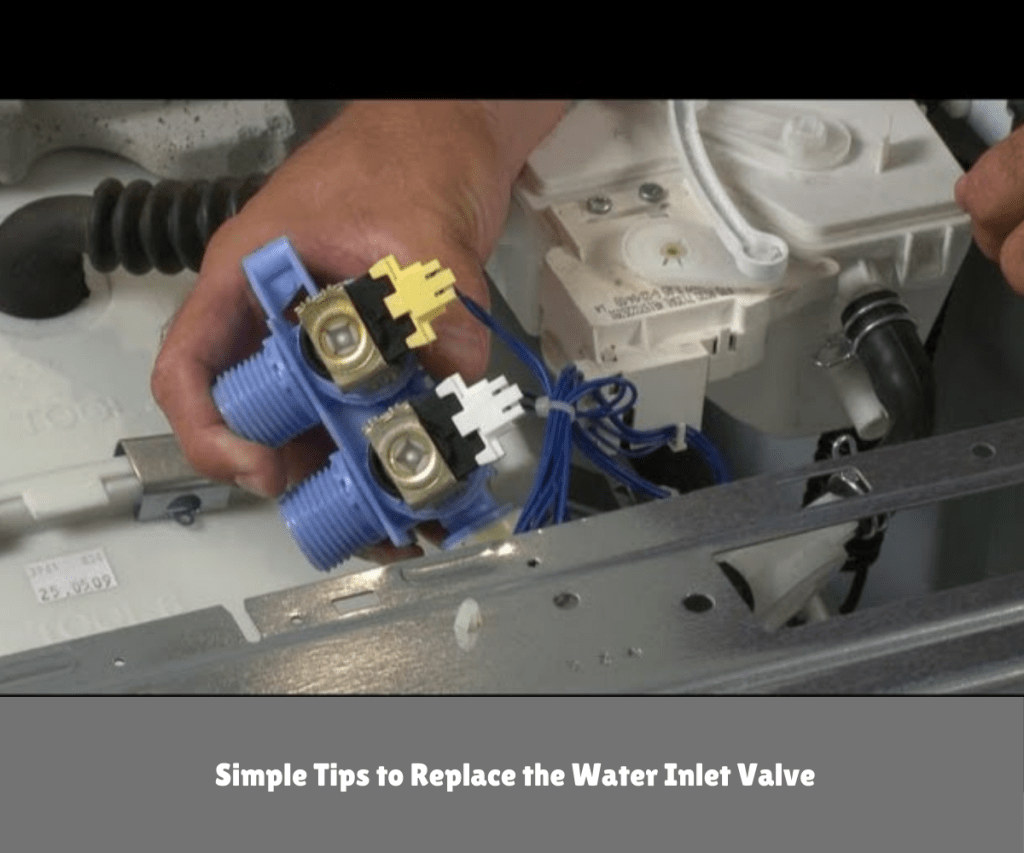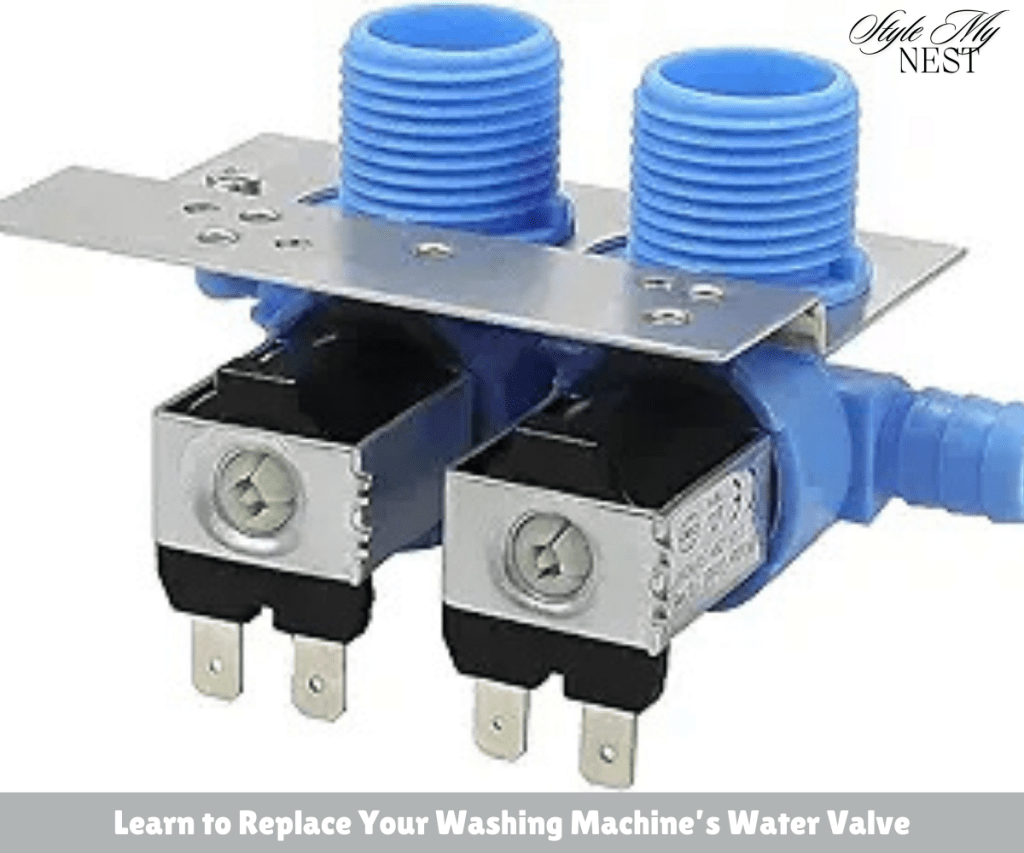Washing machines have become an essential appliance in modern homes. They save time and energy, making laundry chores easier and more convenient. However, like any other machine, washing machines can also malfunction, causing inconvenience and frustration to the user.
If your washing machine is not filling with water or if it is leaking, it may be time to replace the water inlet valve. The water inlet valve is a crucial component in the washing machine, responsible for controlling the flow of water into the machine. Replacing the water inlet valve is a relatively simple task that can be completed with a few basic tools and some knowledge of plumbing. In this article, we will guide you through the steps necessary to replace a washing machine water inlet valve.

What is a Water Inlet Valve?
First, let’s start with what a water inlet valve is. A water inlet valve is a device that controls the flow of water into your washing machine or dishwasher. It’s typically located at the back of the appliance and is connected to the water supply hose.
When you start a cycle on your appliance, the water inlet valve opens to allow water to flow into the machine. Once the machine has filled up with water to the appropriate level, the valve closes to prevent any more water from entering.

Why Might a Water Inlet Valve Need Replacing?
There are a few reasons why a water inlet valve might need replacing. One of the most common reasons is general wear and tear over time. The valve is constantly opening and closing with each cycle, which can lead to the valve becoming worn out and less effective.
Another reason for replacement could be due to a buildup of debris or sediment in the valve. This can cause the valve to become clogged and not function properly.
Common Signs of a Faulty Water Inlet Valve
No Water Flowing into the Machine
The most common sign of a faulty water inlet valve is no water flowing into the machine. If you turn on your washing machine, and no water flows into the machine, the water inlet valve may be faulty. To check if the valve is working correctly, turn off the water supply to the machine and disconnect the hoses from the valve. Clean the valve with a soft brush and reconnect the hoses. Turn on the water supply and check if water flows into the machine.
The Machine Fills with Too Much Water
If the water inlet valve is faulty, it may not shut off the flow of water into the machine. This can cause the machine to fill with too much water, which can damage the machine and cause flooding. If you notice that your washing machine is filling with too much water, turn off the machine immediately and check the water inlet valve. You may need to replace the valve to fix the problem.
The Machine Fills with Too Little Water
If the water inlet valve is not allowing enough water to flow into the machine, the machine may fill with too little water. This can cause the machine to not clean the clothes properly, leaving them dirty. If you notice that your washing machine is not filling with enough water, check the water inlet valve. You may need to replace the valve to fix the problem.
The Machine is Making Strange Noises
If the water inlet valve is faulty, it may cause the machine to make strange noises. The valve may make a humming or buzzing sound when it is not working correctly. If you notice any strange noises coming from your washing machine, check the water inlet valve. You may need to replace the valve to fix the problem.
How to Fix a Faulty Water Inlet Valve
If you have determined that the water inlet valve is faulty, you will need to replace it to fix the problem. Here are the steps to replace a faulty water inlet valve:
Additionally, if the valve is damaged or broken, it will need to be replaced to ensure that your appliance is functioning correctly.
Step 1: Turn off the Water Supply
Before you begin any work on your washing machine, you need to turn off the water supply. Locate the water shutoff valve for the washing machine and turn it off. This valve is usually located behind the washing machine or in a nearby utility closet. Once the water supply is turned off, unplug the washing machine from the electrical outlet.
Step 2: Access the Water Inlet Valve
The water inlet valve is usually located at the back of the washing machine. To access it, you may need to remove the back panel of the washing machine. If your washing machine does not have a back panel, you may need to remove the top panel or the front panel. Refer to the owner’s manual for your specific washing machine model to determine the best way to access the water inlet valve.
Step 3: Remove the Old Water Inlet Valve
Once you have access to the water inlet valve, you can begin removing the old valve. First, disconnect the hoses from the valve. There may be a small amount of water remaining in the hoses, so have a towel ready to catch any spills. Next, remove the screws that secure the valve to the washing machine. Once the screws are removed, gently pull the valve away from the machine. Be careful not to damage any of the wires or hoses connected to the valve.
Step 4: Install the New Water Inlet Valve
With the old valve removed, you can now install the new water inlet valve. Start by reconnecting the hoses to the new valve. Be sure to connect the hot water hose to the hot water inlet on the valve and the cold water hose to the cold water inlet on the valve. Once the hoses are connected, position the valve back into place on the washing machine and secure it with the screws.
Step 5: Reconnect the Wires
The water inlet valve is connected to the washing machine by a series of wires. These wires need to be reconnected to the new valve in the correct order. Refer to the owner’s manual for your specific washing machine model to determine the correct wire configuration. Once the wires are connected, replace any covers or panels that were removed to access the valve.
Step 6: Test the New Water Inlet Valve
Before you turn the water supply back on, it is important to test the new water inlet valve. Plug the washing machine back into the electrical outlet and turn on the water supply. Run a quick cycle on the washing machine to ensure that the valve is functioning properly and that there are no leaks.
Step 7: Clean up and Dispose of Old Parts
Once you have confirmed that the new water inlet valve is working properly, it is time to clean up and dispose of the old parts. Make sure that any screws, wires, or hoses that were removed during the process are properly disposed of or stored in a safe place for future use.

Costs for Replacing a Water Inlet Valve
The cost of replacing a water inlet valve can vary depending on a few factors. Typically, the cost will range from $150 to $300, including parts and labor.
One factor that can impact the cost is the make and model of your appliance. Some brands may require more expensive replacement parts, which can drive up the overall cost.
Another factor is the location of the valve. If the valve is easily accessible and can be replaced quickly, the cost may be lower. However, if the valve is in a hard-to-reach location, it may require more labor time, which can increase the cost.
DIY vs. Professional Replacement
While it may be tempting to try and replace the water inlet valve yourself to save money, it’s generally recommended to have a professional handle the replacement.
Replacing the valve requires working with water and electrical connections, which can be dangerous if not done correctly. Additionally, if the replacement isn’t done properly, it can lead to further damage to your appliance.
Hiring a professional to replace the valve ensures that the job is done safely and correctly. They’ll have the necessary tools and expertise to get the job done efficiently and effectively.
Preventing the Need for Replacement
While replacing a water inlet valve is a relatively straightforward repair, it’s always better to prevent the need for replacement in the first place. One way to do this is by regularly cleaning out your appliance’s filters and checking for any buildup of debris or sediment.
Additionally, if you notice any issues with your appliance, such as it not filling up with water properly, it’s important to address them right away. Ignoring the issue can lead to further damage and potentially even more expensive repairs down the line.
Final Thoughts
If you’re experiencing issues with your washing machine or dishwasher not filling up with water properly, it could be a sign that your water inlet valve needs replacing. While the cost of replacement can vary depending on a few factors, it’s generally recommended to have a professional handle the job for safety and effectiveness.
By taking steps to prevent the need for replacement and addressing any issues promptly, you can ensure that your appliances are functioning properly and avoid costly repairs in the future.